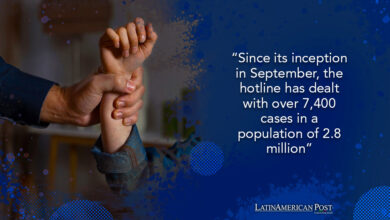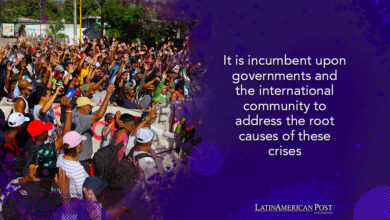Redefining Victimhood: Addressing Men’s Plight in Gender-Based Violence
While the majority of gender-based homicide victims are women and girls, the significant number of male victims often goes unnoticed. This oversight, rooted in stigma and societal norms, calls for a broader understanding of violence's gendered dynamics.

Photo: LatinAmerican Post
The Latin American Post Staff
Escucha este artículo
Leer en español: Redefiniendo la victimización: abordar la difícil situación de los hombres en la violencia de género
Male Victims in the Grim Landscape
The recent United Nations report highlighting that 70% of homicides involving intimate partners or ex-partners victimize women and girls paints a grim picture of gender-based violence. This alarming statistic, underscoring the prevalence of femicides, is a stark reminder of the urgent need to address violence against women. However, there's a crucial aspect of this narrative that often remains in the shadows: the male victims of gender-based violence.
The underreporting and underacknowledging of male victims stem from a myriad of reasons, chief among them being societal stigma and rigid gender norms. The prevailing perception of men as perpetrators rather than victims of domestic violence contributes to a significant blind spot in our understanding of this issue. This skewed narrative not only marginalizes male victims but also impedes a holistic approach to combating gender-based violence.
The Global Perspective
The UNODC's Global Study on Homicide reveals that while women are disproportionately affected by family-related homicides, men are predominantly the victims in overall homicide statistics. In countries with high homicide rates, male-on-male violence, often linked to criminal activities, is the most common form of homicide. This contrast is telling — it underscores how societal factors and motives drive different patterns of violence against men and women.
In regions with lower homicide rates, where family and intimate partner violence are more prevalent, the focus is predominantly on male violence against women. This focus, while essential, inadvertently overlooks the reality that men can also be victims of intimate partner violence. The ingrained stereotype of men as inherently violent and dominant obscures the fact that they can and do suffer from abuse in domestic settings.
Societal Stigma and Reluctance
The stigma surrounding male victimhood in domestic violence scenarios is deeply rooted in traditional notions of masculinity. Men are often reluctant to report abuse due to fear of emasculation, ridicule, or not being taken seriously. This societal attitude creates a barrier for men seeking help and contributes to underreporting such cases.
Additionally, the lack of resources and support systems for male victims exacerbates the issue. The majority of shelters, hotlines, and support services are geared toward women, leaving male victims with limited options for assistance. This gap in support services is a reflection of the broader societal misconception that men do not require or deserve the same level of protection and care as women in situations of domestic violence.
A Call for Gender-Inclusive Strategies
The framing of gender-based violence as predominantly a women's issue also hinders the fight against such violence. By not acknowledging the full scope of the problem, including its impact on men, we fail to develop comprehensive strategies that address the root causes of violence in our societies. A gender-inclusive approach to combating domestic violence is crucial for creating safer communities for everyone, regardless of gender.
Also read: Mexico's Gender Mandate Challenge: Moving Beyond Parity for Effective Governance
In conclusion, while it is indisputable that women and girls bear the brunt of gender-based violence, particularly in intimate partner scenarios, it is imperative to broaden the conversation to include male victims. Acknowledging and addressing the plight of men in these situations is not about diverting attention from the struggles of women but rather about understanding the full spectrum of domestic violence. A holistic and inclusive approach to tackling gender-based violence is essential for effectively combating this pervasive issue in our societies.




